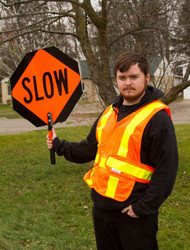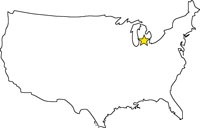Keeping Our Kids Safe
Posted by April L. on 6th Jun 2017
Driving a vehicle has become so commonplace, such a regular part of our daily activity, that it's easy to forget about the dangers. Sadly, it is often through an accident, or a near-accident, that we are reminded how crucial it is to remain alert and aware of our surroundings in order to keep our kids safe.
But it's not just drivers who are at risk on the road. For pedestrians, the road traffic crash statistics appear to be getting worse. According to the Centers for Disease Control (CDC) webpage on motor vehicle safety, in 2015, 5376 pedestrians were killed in road traffic crashes in the USA, i.e. 1 every 1.6 hours.
A report from the U.S Department of Transportation, released in 2015, showed us just how hazardous roads can be for pedestrians. According to the report;
- The number of road traffic crash-related pedestrian deaths was up from 4,735 fatalities in 2013. There has been a gradual rise in this number since 2003.
- Almost 129,000 pedestrians were treated in ERs for non-fatal injuries from road traffic crashes, up from 66,000 in 2013.
- Pedestrians were 1.5 times more likely to be killed in a road traffic crash than the motor vehicle passengers, and accounted for 14 per cent of the total road traffic fatalities and 3 per cent of total road traffic-related injuries.
- Children 14 years old and younger made up 5 per cent of these pedestrian fatalities, and 15 per cent of road traffic crash injuries; Seniors, 19 per cent; Males, 69 per cent.
- 73 per cent of pedestrian fatalities occurred in urban areas.
Crosswalks Do Not Necessarily Equal Safety
A study of 5,000 Californian road traffic crashes between the 1970s and 1990s, reported that 32 per cent of these crashes occurred at or within 50 feet of an intersection. Within this group of crashes, 30 per cent involved a vehicle making a turn; 22 per cent were due to a pedestrian dashing into the intersection - often a child; and 16 per cent were caused by the driver violating a traffic regulation (speeding, running a light, etc.).
The problem has been serious enough that there are a number of programs across the U.S. that have been set up to educate, raise awareness, and train adults and children about walking more safely - or have those objectives in their mandates. The National Center for Safe Routes to School's Safe Routes program and Safe Kids Worldwide are a few examples or programs that promote road safety for children. Even the U.N. Road Safety Collaboration has published a manual about road safety for police, planners, educators, and others.
Thankfully, there are ways people can make crossings more safe for their communities, for example, undertaking crosswalk safety and traffic calming measures.
- Lit Signs: Even during the day, lit signs can help because they draw attention - Think about the flashing lights at a pedestrian or school crossing, for example.
- Speed Indicators: We've all slowed down after realizing what speed we are actually driving at - signs that show actual speed along with the legal speed limit are particularly sobering.
Having another human being physically present and managing the flow of traffic is also extremely effective for keeping our kids safe. You have likely encountered people with SLOW and STOP paddles as you drive past construction sites. Many elementary school crosswalks have attendants - teachers, parents, or even older student volunteers who don the reflective vests and wield STOP paddles, who step into the crosswalk and make eye contact to ensure that the cars stop before the pedestrians start crossing.
All of these measures to increase road safety for children - particularly the school crosswalk monitor programs - are not only valuable in protecting pedestrians and alerting drivers, but they also promote a sense of community safety and remind pedestrians that they too have a responsibility when maintaining their own safety.
Take a look at the signs and traffic safety products available at Dornbos Sign and Safety, get a quote for your custom sign, or contact them to find out more. Do your part to make roads safer.




